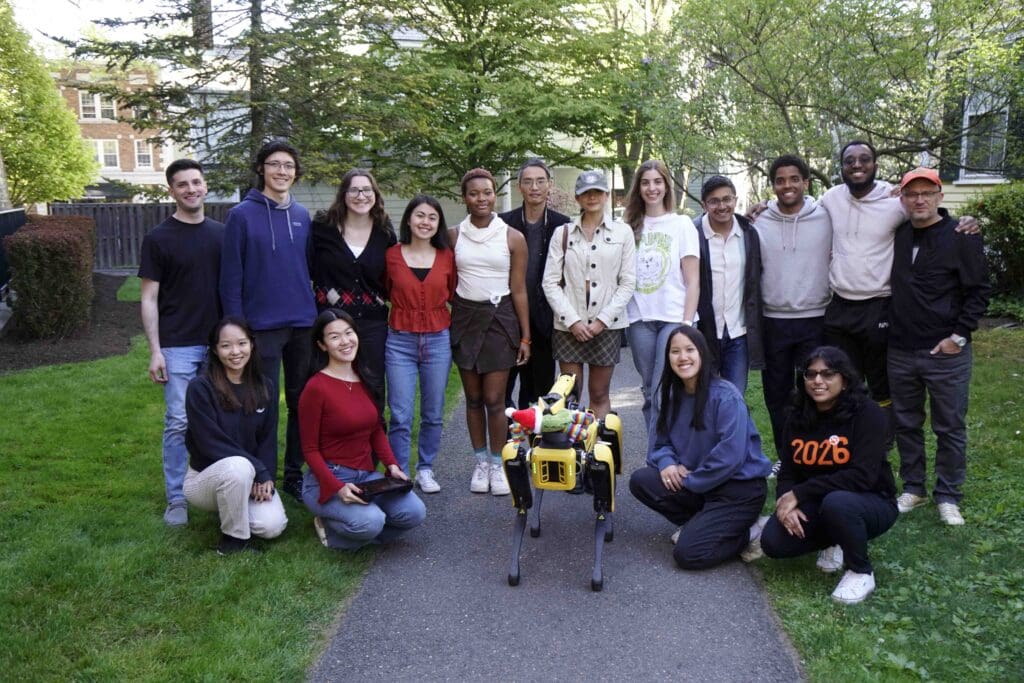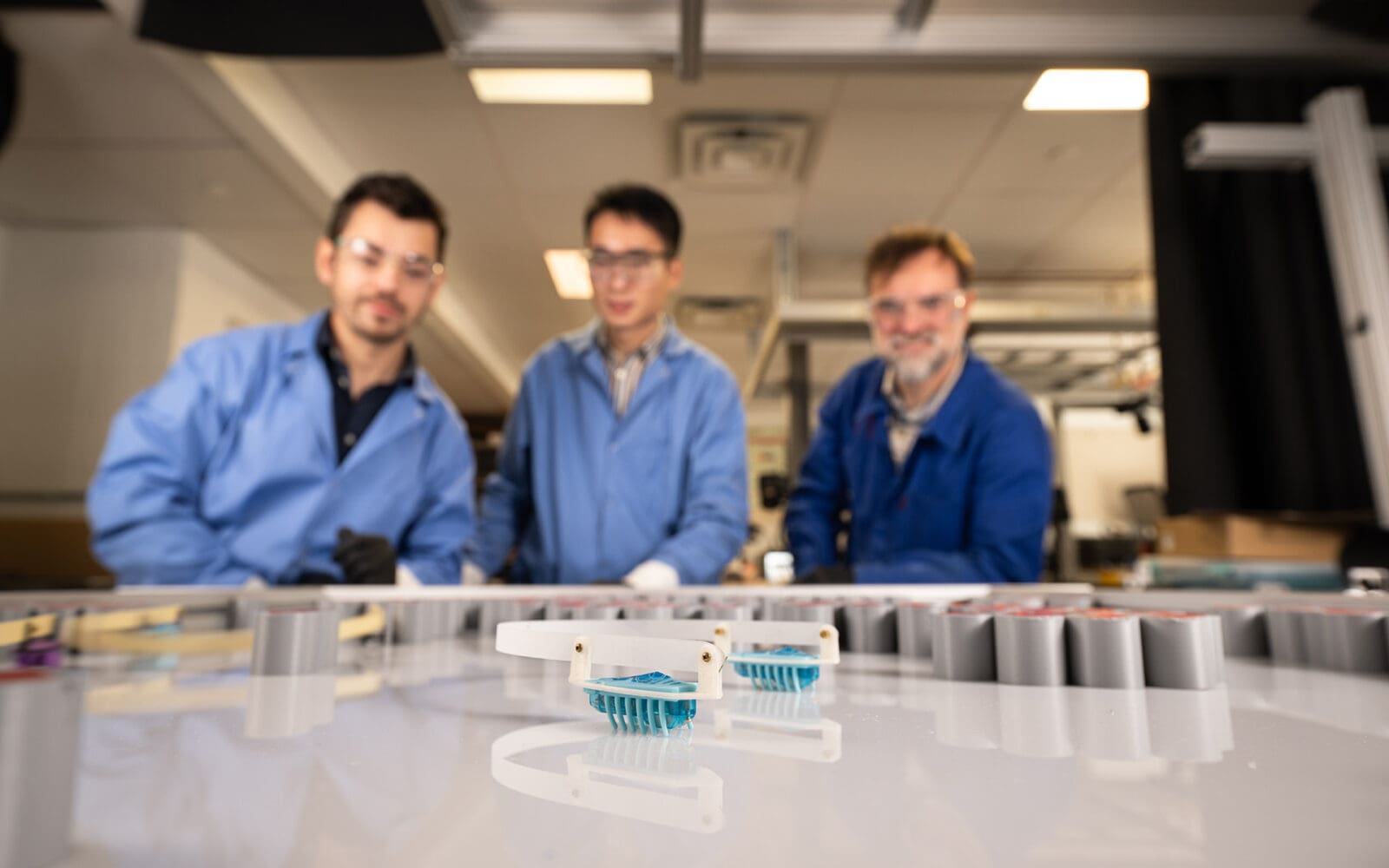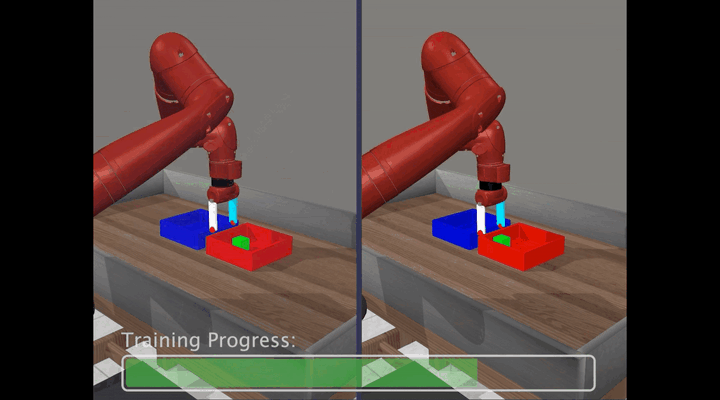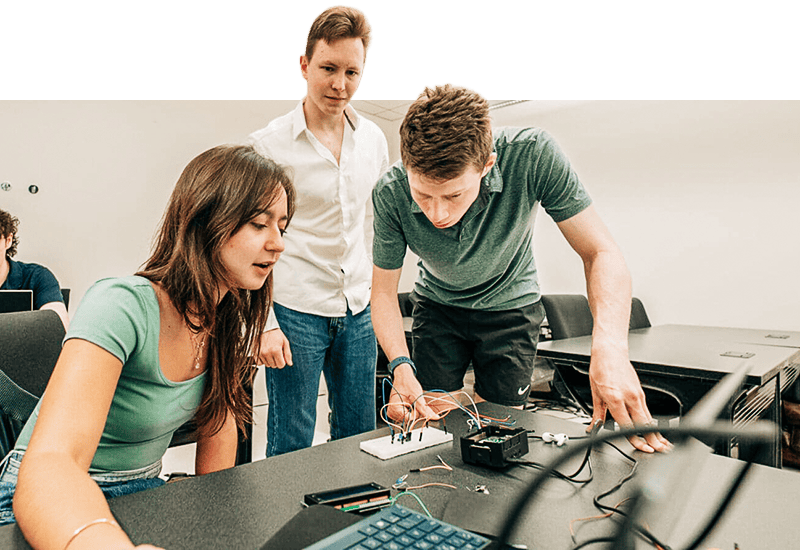
Meet SPOT the ‘bot: Course explores learning to live with robots
By
on
SPOT — now a viral social media star — isn’t a real dog; it’s a Boston Dynamics robot. And the event, part of an interdisciplinary Princeton Engineering and Anthropology course, was an effort to get the kids comfortable with a technology that can come off as intimidating. The Princeton students who were serving as SPOT’s operators encouraged the kids to pet the robot when it was off.
“Some asked ‘what does the robot eat?’ Well, it doesn’t, you just stick it on your charger, like the docking station. I explained to them it’s a lot like your phone, or your video game controller,” said one of the students, Vasumathi Venkat, a junior majoring in electrical and computer engineering.
The class, “Robots in Human Ecology: A Hands-on Course for Anthropologists, Engineers, and Policymakers,” allows students to collaborate with the robot in a variety of lively ways. They discuss potential roles, meanings, and ethics of robots in society, as well as gaining hands-on experience manipulating the robot for generating ethically-sound and community-engaged applications on campus. The class, made possible by the 250th Anniversary Fund for Innovation in Undergraduate Education, is led by Alexander Glaser, associate professor of mechanical and aerospace engineering and international affairs, as well as Ryo Morimoto, assistant professor of anthropology and the Richard Stockton Bicentennial Preceptor.
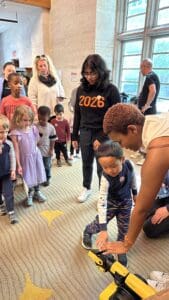
The students neither invented nor built the robot, and while an increasing number of labs at Princeton are working to develop cutting-edge robotic devices, the purpose of this class was different: to help people better relate to a world that includes robots.
And what better way to make a robot relatable than to dance with it? One group of students created a project that made a splash on social media. They created a TikTok account for the robot, “SPOTlight,” which shows SPOT in various musical videos. In one video that received 4.5 million views, student Gigi Schadrack ‘25 line dances with the robot in a lab, complete with both jumping up on cue. In one that received 1.4 million views, she ballet dances with the robot.
In another popular video, the robot has fallen over on its side, and needs help getting back up on a mat.
Schadrack said the TikTok videos are part of an effort to demystify robotics, gather data, entertain, and engage audiences in discussions about interactions between humans and robots.
… Dancer: @G Disclaimer: this account is run by Princeton University students exploring use cases with Spot, a @Boston Dynamics robot. #robot #dance #robotics #tech #ballet #technology #princeton #princetonuniversity #viral #fyp ♬ Black Swan – Swan Lake – Pyotr Ilyich Tchaikovsky
“As a dancer, I wanted to explore how bipedal movements could be translated to a quadruped,” Schadrack said. Liora Nasi ‘24 was instrumental in programming the robot’s movements, and another classmate, Wasif Sami ‘25, provided an anthropological analysis of the work and its public response.
Schadrack said she did not expect millions of views, but in following viral trends on TikTok, as well as best practices regarding the platform’s algorithm, she did expect healthy engagement with the posts.
“A gift of going viral meant eliciting a wide range of comments and replies,” Sami said. “As a group, we grappled with how our playful, performative content exists in dialogue with higher-stakes impacts of technology. Navigating our audience reaction taught us to consciously situate our work amidst the many uses of robots, as well as to listen openly to the discordant, plural voices on the internet.”
The majority of TikTok’s users are from Generation Z, which is the group that will most need to familiarize itself with human-robot interactions, Schadrack said.
Aaron Serianni ’25, a math major, said the class gave him a good sense of how industrial robots work, and what their limitations are, as well as their advantages. As sleek as SPOT may be, “it’s quite a limited use case,” he said. “I can imagine what it would take to broaden the uses of robots in everyday life.”
Vivian Chen ’25, an electrical and computer engineering major, said she loves robots, but this class allowed her to look at the technology in a broader context. “This is a great interdisciplinary course where we can learn with anthropologists, policymakers, and people in different fields,” she said. The course helped show how they feel about robots, she said, allowing her to work with her classmates on a group project “to see how we can influence the community and their perceptions about robotics.”
